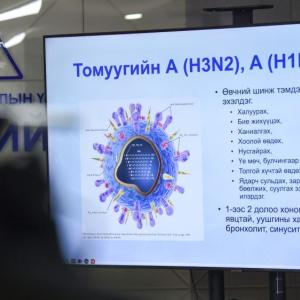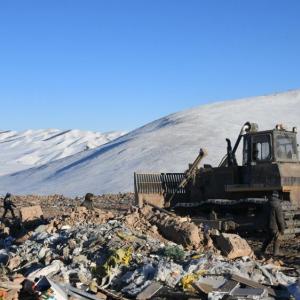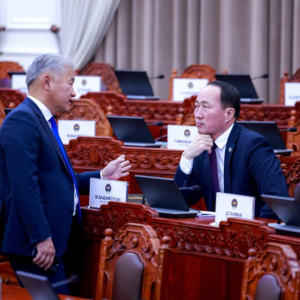Food insecurity and malnutrition discussed
SocietyUlaanbaatar/MONTSAME/ Today,
a discussion was held at Blue Sky under the theme ‘Asia and the Pacific
Regional Overview of Food Security and Nutrition 2018’. The report, published
by the Food and Agriculture Organization of the United Nations (FAO), the
United Nations Children’s Fund (UNICEF), World Food Programme (WFP) and the
World Health Organization (WHO), was released to the public on November 2,
2018. The report highlights a number of converging challenges that threaten to
undermine the Sustainable Development Goal to end all forms of malnutrition by
2030 (SDG 2) in Asia and the Pacific.
The discussion brought
together UN Resident Coordinator Beate Trankmann, UNFAO Representative Vinod Ahuja,
WHO Representative Dr.Sergey Diorditsa, Food Security Monitoring Consultant at
UN World Food Program Darko Petrovic, UNICEF Representative Alex Heikens and specialists.
During the event, UN
Resident Coordinator Beate Trankmann was shortly interviewed. She said, “In
Mongolia, limited or poor access to safe water, sanitation and hygiene (WASH)
is one of the key drivers of malnutrition. Alongside, there is an issue of
overweightness. Why malnutrition coexists with obesity connects with
increasingly use of cheap, unhealthy processed foods with high ingredients of salt,
sugar and fat but poor essential nutrients among youth and children.”
About Mongolia, the report
says that overweight is high in all regions and population groups in Mongolia
with 46 percent of women and 49 percent of men. The prevalence of overweight increased most
dramatically in school age children from 4.3 percent in 2010 (National
Nutrition Survey IV (NNS)) to 28.6 percent in the NNS V with nearly 1 in 4
overweight children obese (6.4 percent) and over 1 in 3 school age children
overweight in Ulaanbaatar (34 percent). Prevalence of overweight begins at
young age with 12 percent of children under 5 years of age overweight.
Based on the Household Food
Insecurity Access Scale (HFIAS), high household food insecurity in all regions
with 65 percent of households having some level of food insecurity and 23 percent
having severe food insecurity with hunger. Food insecurity was highest in
Khangai, with 80 percent of households classified as food insecure and 25
percent severely food insecure, and in Ulaanbaatar, with 68 percent of HHs food
insecure and 27 percent severely food insecure.
 Ulaanbaatar
Ulaanbaatar














































































